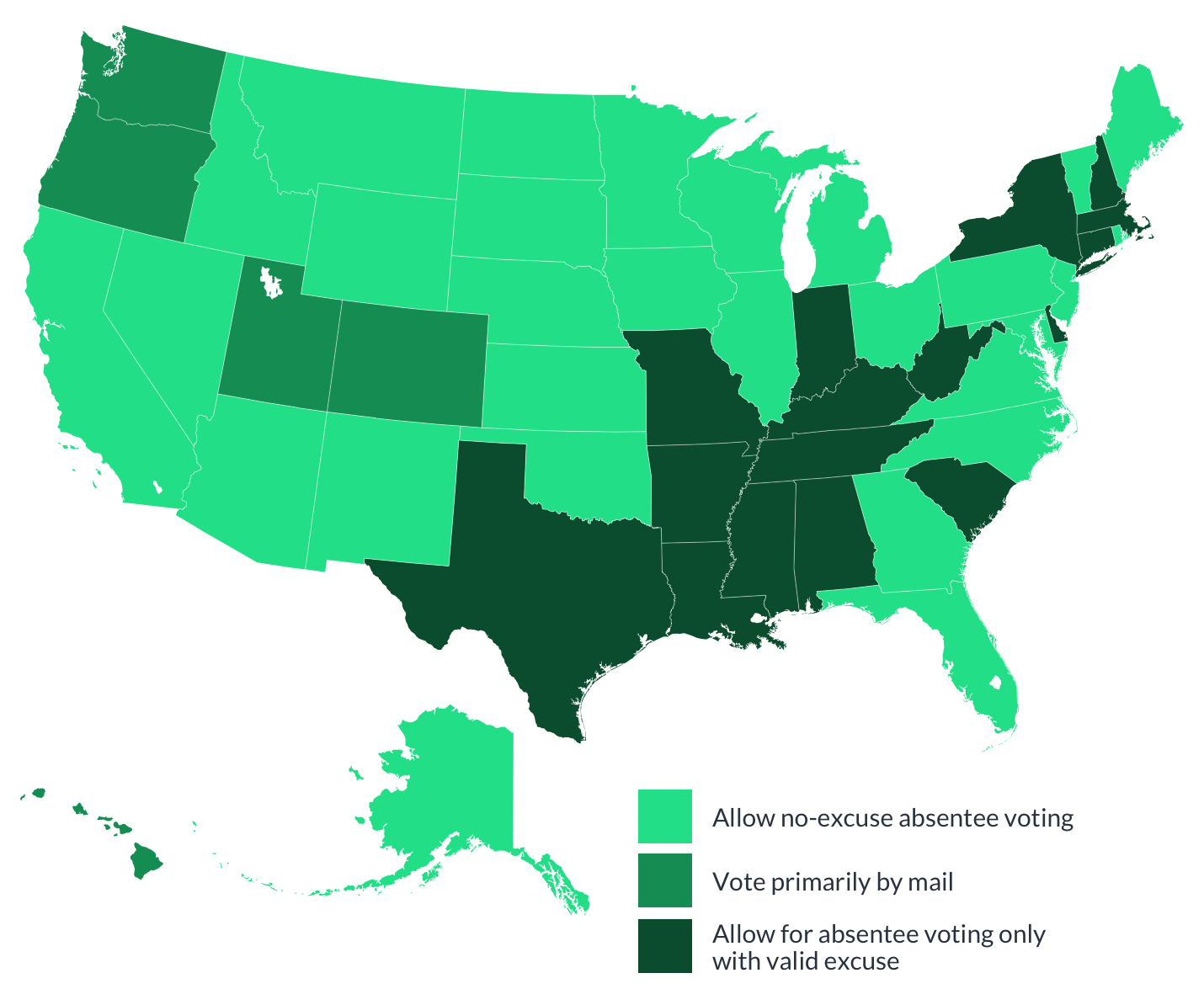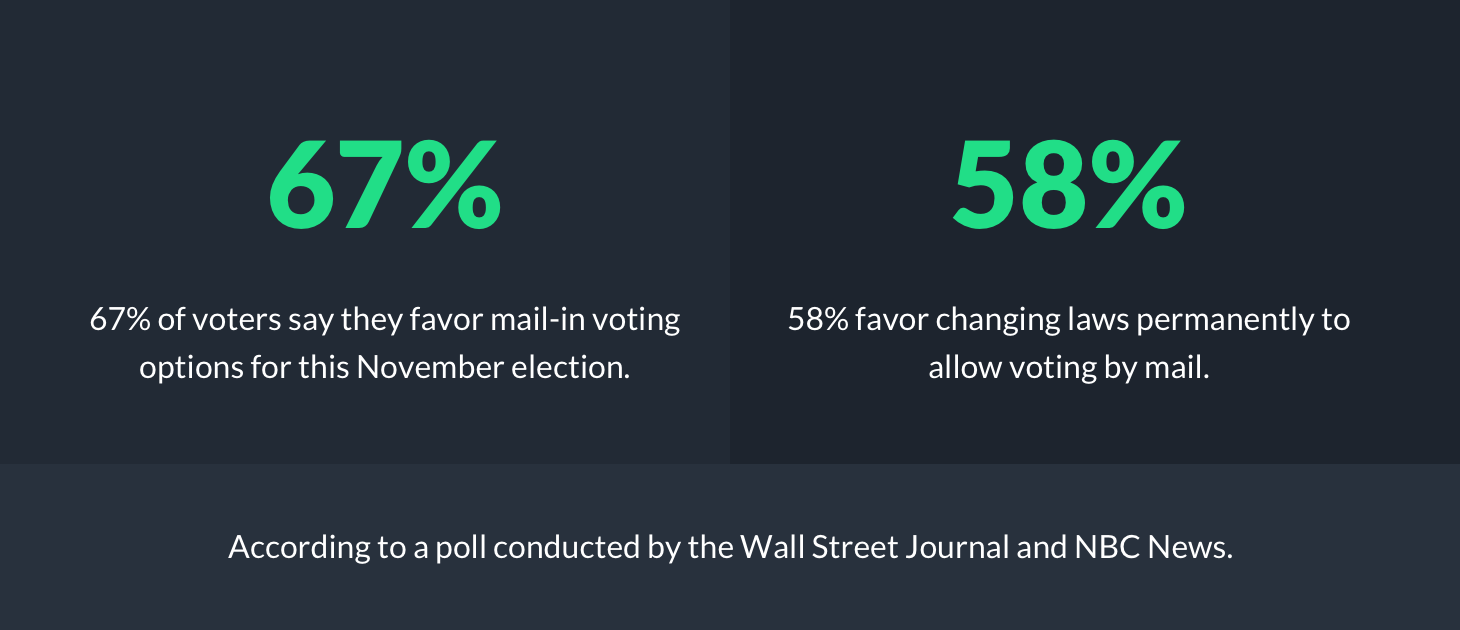Expect High Numbers of Voting-by-Mail this November
Presidential elections are looming, and states expect a surge of mail-in votes. Counties will need to collect, count, and verify hundreds of thousands of paper ballots quickly and securely – but hand counting and old tabulation scanners can’t keep up.
Experts predict over half of voter ballots will be submitted via mail due to the coronavirus pandemic. This is a large increase from 2016, where just under a quarter of the ballots were mailed, according to the Wall Street Journal.
Now’s the time for states to prepare for the influx of mail-in ballots with a top-of-the-line scanner: the ibml Fusion.
Which States Allowed Absentee Voting Pre-Pandemic?
All 50 states allow for some form of absentee ballots, but rules differ considerable across regions.
Here’s the breakdown of states’ vote-by-mail policies before the pandemic.

Mail-in Voting in the Time of Coronavirus
Absentee voting hasn’t been prevalent in the US, but the majority of voters now support it to protect public safety during the current crises.

Several states have already passed temporary bills expanding vote-by-mail access, including New York, California, and Kentucky.
Congress has also discussed changes at the federal level, proposing that states allow voters to request absentee ballots online, vote by mail with no excuse required, or vote early. There is also a provision that requires states to mail absentee ballots during national emergencies.
The Benefits of Mail-In Ballots
While mail-in ballots have been an option for some voters since 1864, the widespread call for it now is a direct response to the current coronavirus pandemic.
No one knows how severe COVID-19 will be in November, but the recent presidential primaries indicate a majority of citizens want a safe voting option.
Absentee voting could help protect the public and ensure fewer people forgo voting out of fear of infection. Safety benefits of mail-in voting include:
- Fewer people gathering and waiting in lines at polling places
- Fewer people using the same pencils, touchscreens, etc.
- Fewer staff needed to man polling places
While public safety is the main catalyst for this sudden shift, mail-in voting has a myriad of additional benefits.
- Satisfaction. Absentee voters report high satisfaction, having more time to review the issues and vote accordingly, without waiting in lines.
- Money. Traditional polling places require staff (and staff require training), which would be reduced with mail-in votes and the right ballot counting scanners.
- Turnout. Convenience is a big factor—especially in the US where turnout is historically low compared to other Western democracies.
- Inevitably, paper ballots will increase dramatically in November, so it’s time for states to take action.
States Need to Take Action Now
The sudden rise in coronavirus cases across the US left several states scrambling to facilitate absentee voting during the presidential primaries. States like Wisconsin and Ohio had little time to prepare, and dealt with missing ballots, processing issues, and more.
But states can hold safe and reliable elections with the right planning and vote scanning equipment.
Fielding the Wave of Absentee Ballots with the ibml Fusion
A critical factor in the fabric of our democracy is faith in our elections. For the voting public to trust mail-in ballots, they need to trust the ballot counting systems in place.
States need a ballot counting scanner with the speed, accuracy, and security to ensure a fair and safe election.
The fastest scanner on the market: the ibml Fusion
Perfectly equipped for accuracy and speed, the ibml Fusion processes hundreds of voter ballots a minute. And automated validation and superior image quality ensure easier voter verification.
For a smaller, mid-volume option, the ImageTracDS 1210 is the world’s fastest desktop scanner-sorter. It’s also field-proven for use in tabulating votes at polling places, like King County, Washington.
King County has been voting almost entirely by mail since 2011—and ibml scanners have been a large factor in their success. They’ve been able to tabulate votes at an unprecedented speed, and have maintained security and audibility to put voters at ease.
Replicate King County’s success by preparing now for the surge of mail-in ballots.